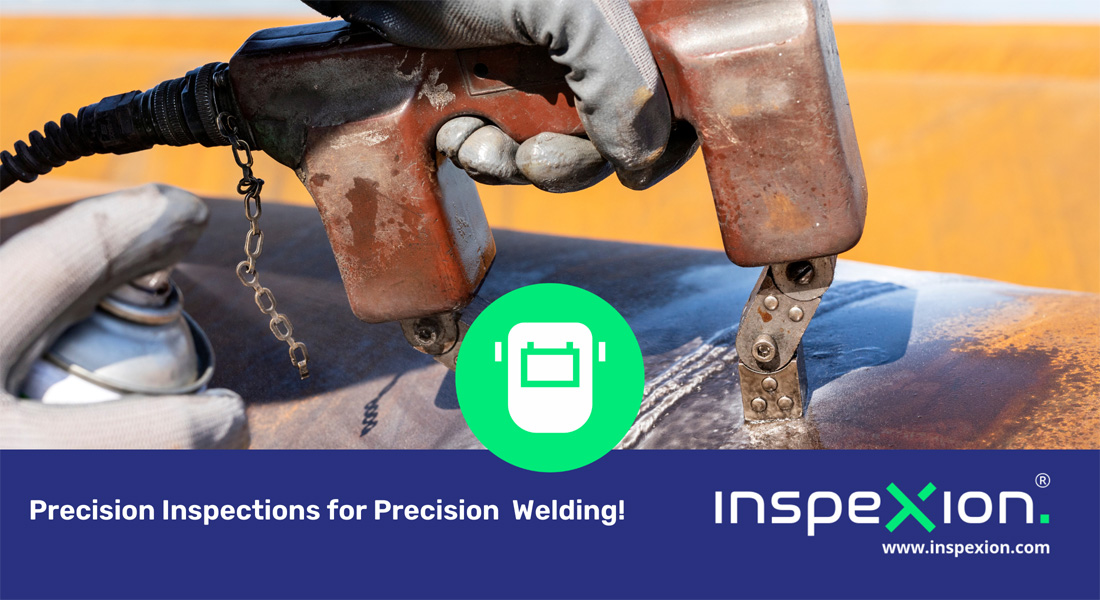Why Welding Inspection Milwaukee Is Critical for Industrial Applications
Wiki Article
Understanding the Importance of Welding Examination in Ensuring Structural Integrity and Security Throughout Various Industries
Welding evaluation is an indispensable procedure that safeguards architectural honesty and safety and security throughout diverse industries. By carefully examining weld high quality, inspectors assist prevent flaws that could cause disastrous failures. This systematic assessment not only reinforces conformity with sector standards but additionally plays an essential role in maintaining possessions and guaranteeing public safety. The ramifications of ignoring proper examination methods are profound, typically causing considerable financial and human prices. As we discover the intricacies of welding examination, the concern develops: what are one of the most essential variables that contribute to effective inspection processes?Function of Welding Evaluation
While the stability of welded structures is paramount to safety and security and efficiency, the function of welding examination can not be overstated. Welding inspection serves as a vital quality control procedure that ensures the adherence to developed requirements and specifications throughout the welding operation. By systematically assessing welds for problems, disparities, and non-compliance, examiners play a vital duty in guarding the integrity of structures across different sectors.Welding assessments encompass a range of tasks, from pre-weld evaluations to post-weld examinations. These analyses not only identify potential problems before they rise but likewise enhance the overall integrity and lifespan of welded parts. Welding Inspection Milwaukee. Assessments help to confirm the ability and competencies of welders, making certain that welding treatments are executed appropriately and materials are suitable
Additionally, a strenuous inspection method cultivates conformity with regulative needs and industry criteria, reducing the danger of tragic failings. By promoting a culture of safety and security and liability, welding examination contributes considerably to both financial and functional efficiencies. Altogether, the duty of welding assessment is indispensable, as it underpins the top quality, safety, and durability of welded frameworks vital to contemporary infrastructure and sector.
Sorts Of Welding Examinations
Comprehending the numerous kinds of welding assessments is vital for maintaining the top quality and security of welded structures. Welding examinations can be classified into numerous kinds, each offering a certain objective in the analysis procedure.Visual assessment is one of the most essential kind, entailing a mindful exam of the welds with the naked eye or through magnification. This approach aids determine surface flaws such as cracks, incomplete fusion, or excessive spatter.
Next is non-destructive screening (NDT), that includes techniques such as ultrasonic testing, radiographic screening, and magnetic fragment screening. These approaches allow examiners to assess the stability of welds without endangering the material's framework. Ultrasonic screening makes use of high-frequency sound waves to identify inner imperfections, while radiographic screening utilizes X-rays or gamma rays to visualize inner weld characteristics. Magnetic particle screening, on the various other hand, is efficient for identifying surface area and near-surface gaps in ferromagnetic products.
Devastating screening, though less typical, includes physically evaluating samples to recognize the weld's mechanical homes. Each kind of examination adds to a detailed analysis, ensuring that welding meets market requirements and security requirements.
Industry Specifications and Regulations
Establishing sector standards and guidelines is critical for ensuring the safety and reliability of welded frameworks. These standards work as criteria for quality, safety, and efficiency, assisting producers and assessors in the execution of welding procedures. Numerous companies, such as the American Welding Culture (AWS) and the International Organization for Standardization (ISO), have actually created extensive requirements that determine treatments for welding techniques, credentials of welders, and evaluation methods.Compliance with these laws not only improves the high quality of welds however additionally reduces risks associated with structural failings. Particular codes, such as the ASME Boiler and Stress Vessel Code, overview needs for the building and construction of stress vessels, guaranteeing they can withstand functional stress and anxieties. In addition, local and nationwide guidelines frequently mandate adherence to these sector criteria, enhancing their significance throughout fields like building and construction, aerospace, and automobile manufacturing.
Normal updates to these criteria reflect advancements in innovation and welding strategies, making sure that precaution remain pertinent. Thus, a comprehensive understanding and application of these criteria is necessary for welding experts, fostering a society of security and quality in bonded structures.
Effects of Poor Inspections
Poor inspections can lead to severe repercussions in the welding industry, threatening the very policies and criteria created to make sure security and architectural stability. The consequences of inadequate evaluations can manifest in various forms, from immediate safety hazards to long-term architectural failures. One of one of the most worrying results is the potential for devastating accidents, which can result in significant injury or death. In sectors such as building and construction, manufacturing, and aerospace, the effects of second-rate welding can compromise whole structures or components, bring about expensive repair services and considerable downtime (Welding Inspection Milwaukee).click this link Moreover, inadequate assessments can tarnish a company's track record and cause legal repercussions, including penalties and lawsuits. Non-compliance with established requirements not just threatens the honesty of jobs however additionally diminishes customer trust in the brand. Additionally, the economic effects can be shocking, encompassing both direct costs associated with fixings and indirect expenses such as lost organization chances and increased insurance policy premiums. Inevitably, the ramifications of bad assessments expand beyond specific tasks, influencing industry-wide criteria and public perception, thus emphasizing the critical demand for extensive and reliable welding evaluations.
Finest Practices for Effective Evaluations
Effective welding examinations are vital to ensuring the stability and security of bonded frameworks. To achieve ideal outcomes, assessors should stick to several ideal techniques that enhance the examination procedure.
Second of all, assessors need to have the needed credentials and qualifications appropriate to the welding processes and materials being analyzed. Continuous training and professional advancement are crucial to remaining updated on industry criteria and technological developments.
Furthermore, using proper evaluation devices and methods, such as visual page inspections, ultrasonic testing, and radiographic examinations, is vital for discovering problems that can jeopardize architectural integrity.
Last but not least, detailed documents of the examination procedure is crucial. This consists of recording searchings for, photos, and any type of rehabilitative activities taken. Clear and exact reporting not only helps with accountability but likewise help in future evaluations and maintenance. By executing these best methods, companies can dramatically boost the performance of their welding assessments and make sure secure, dependable operations.
Conclusion

To conclude, welding inspection is crucial for preserving structural integrity and safety and security throughout numerous markets. By systematically reviewing welds and adhering to recognized standards, the examination procedure minimizes risks related to problems and non-compliance. The execution of ideal practices in read this article welding evaluations not only improves the reliability and lifespan of bonded parts yet also supports sector policies. Focusing on effective welding assessments is vital to ensure the safety and security of personnel, possessions, and total functional integrity (Welding Inspection Milwaukee).

As we check out the intricacies of welding assessment, the question develops: what are the most critical aspects that add to effective assessment procedures?
Welding inspection serves as a critical quality control process that makes certain the adherence to established requirements and requirements throughout the welding operation. In sum, the function of welding assessment is important, as it underpins the top quality, safety and security, and long life of bonded structures vital to contemporary framework and sector.
Various organizations, such as the American Welding Culture (AWS) and the International Organization for Standardization (ISO), have actually developed detailed requirements that determine treatments for welding methods, credentials of welders, and assessment strategies.
Ultimately, the implications of inadequate evaluations extend past specific projects, impacting industry-wide criteria and public perception, hence emphasizing the important need for extensive and effective welding inspections.
Report this wiki page